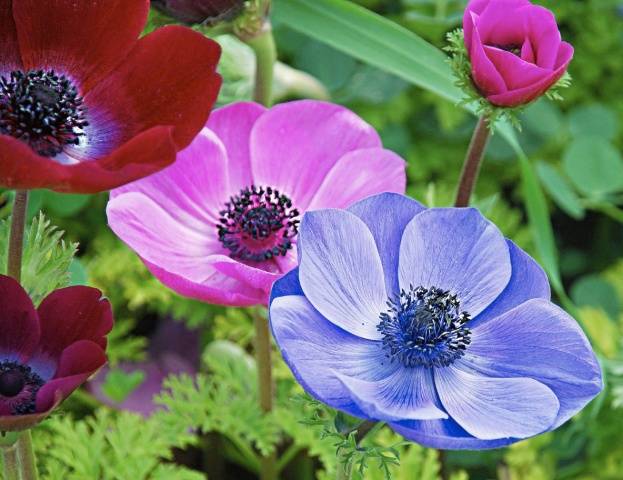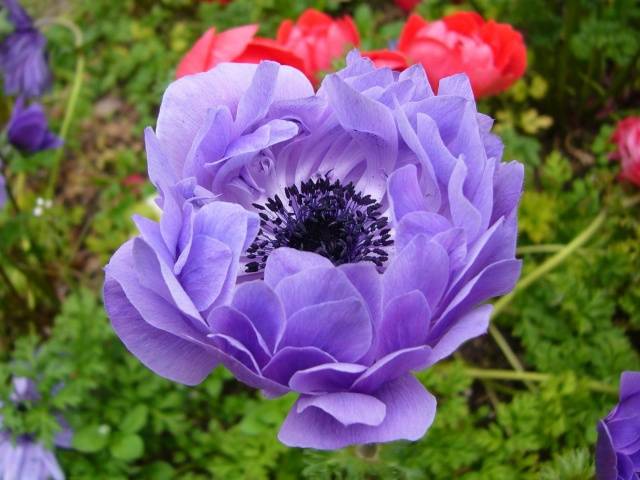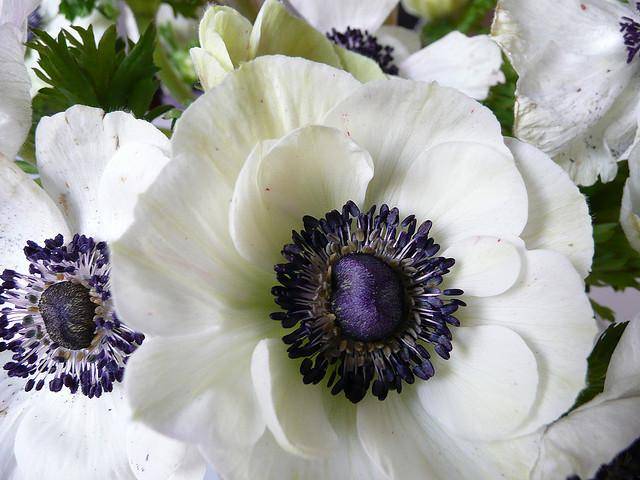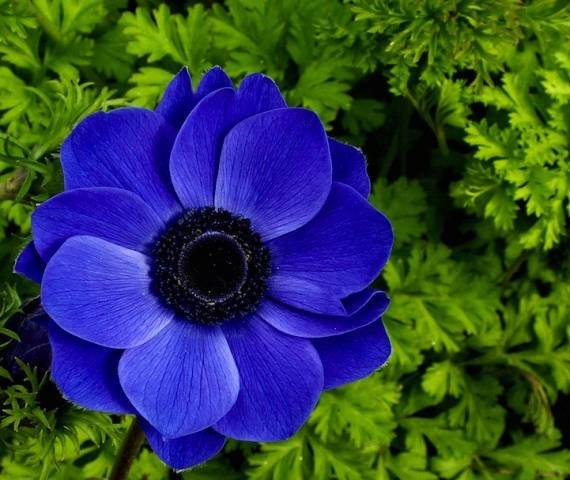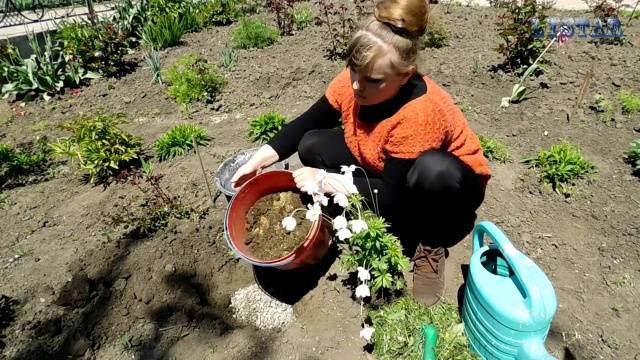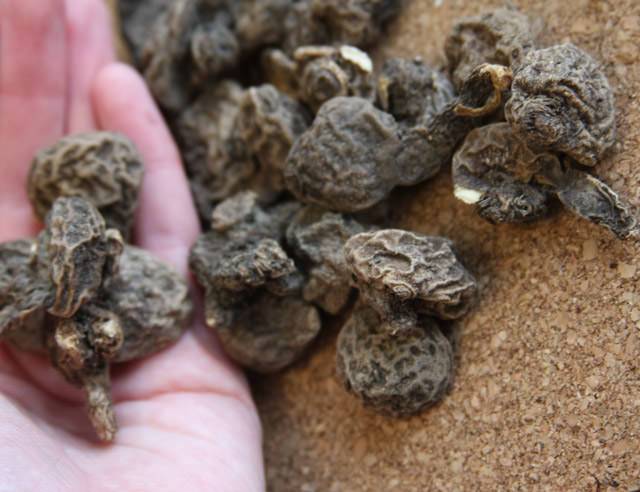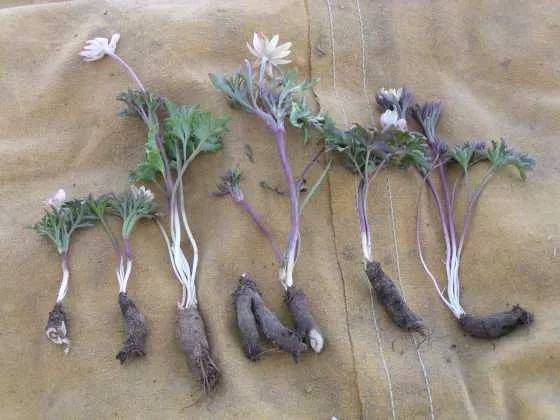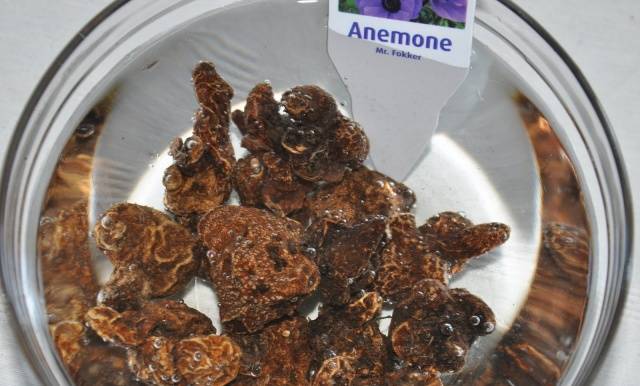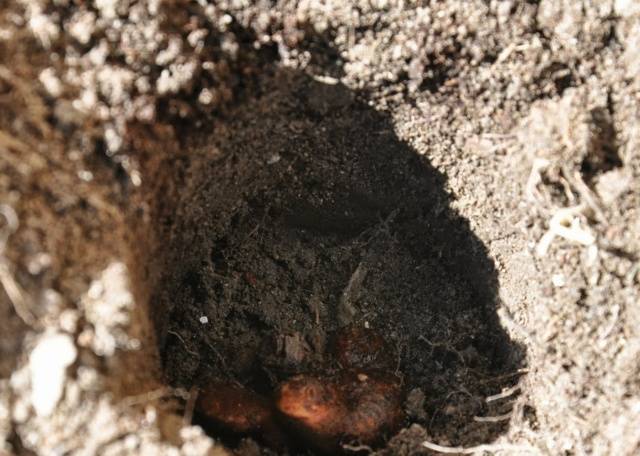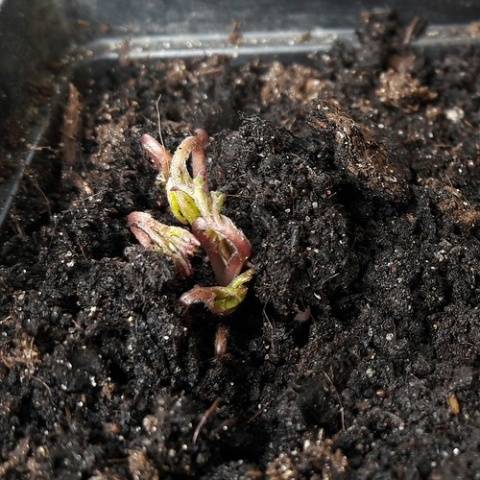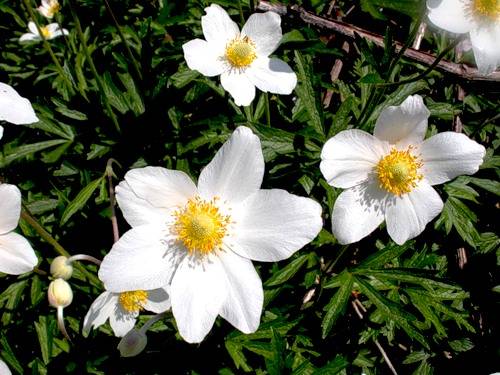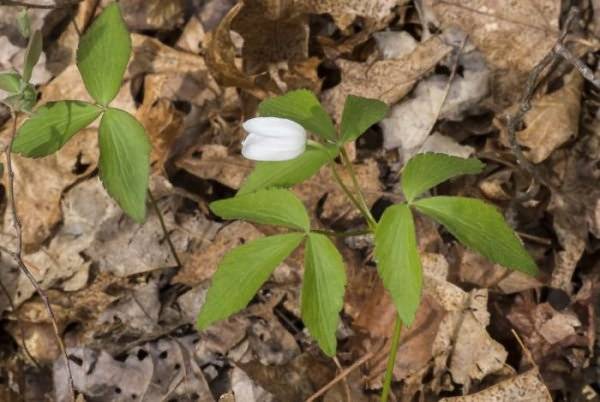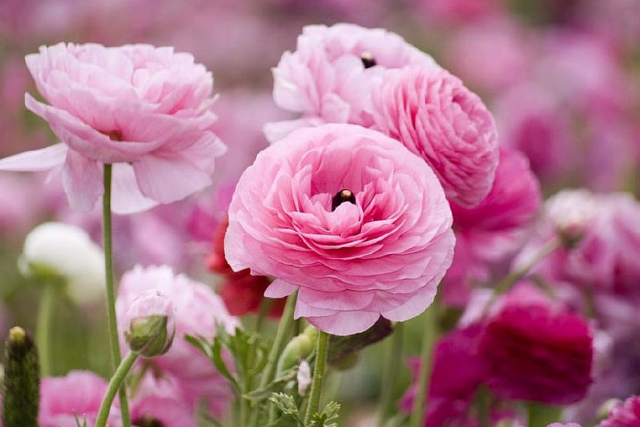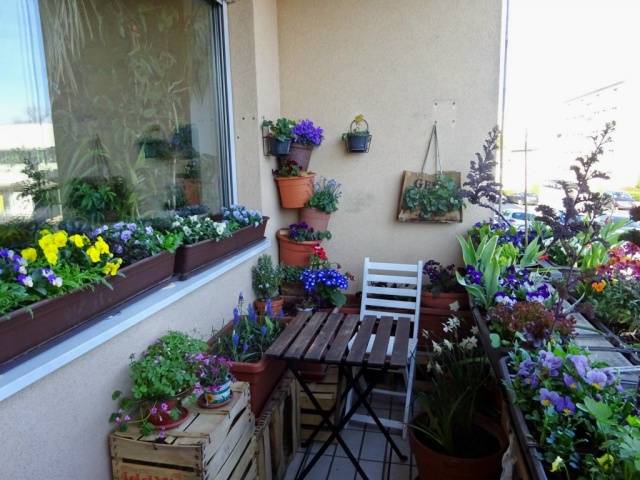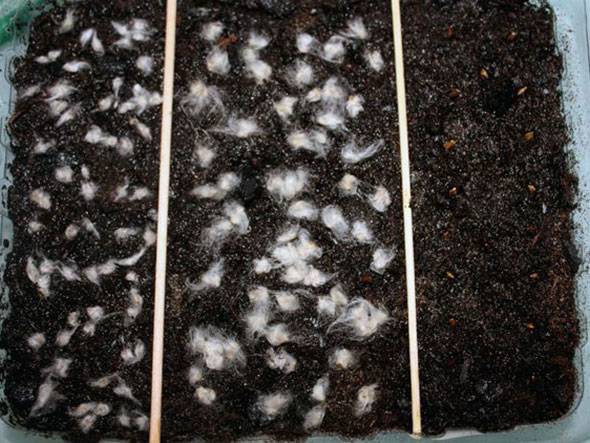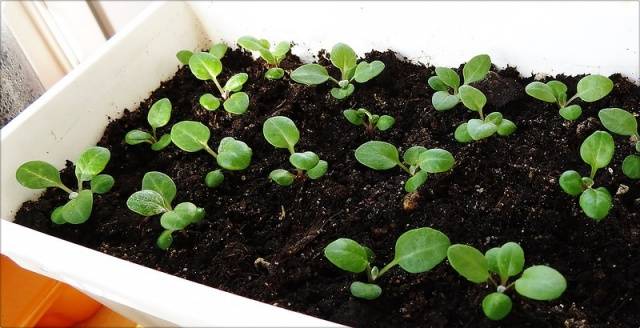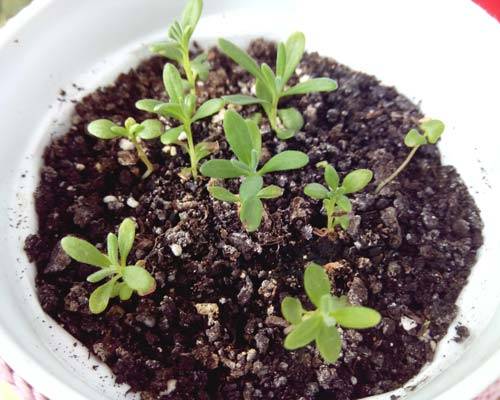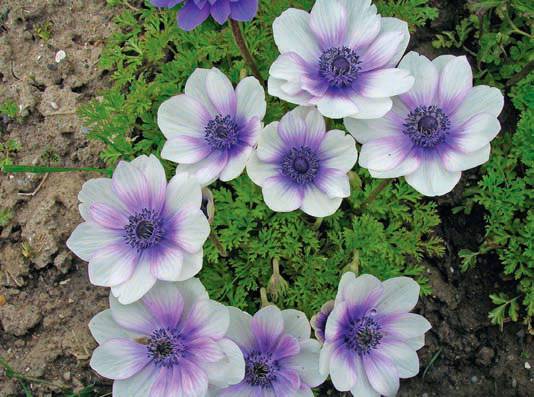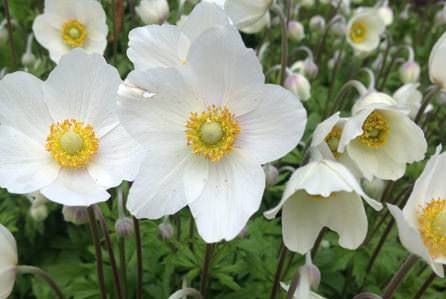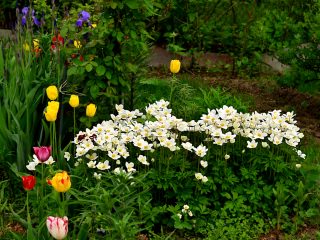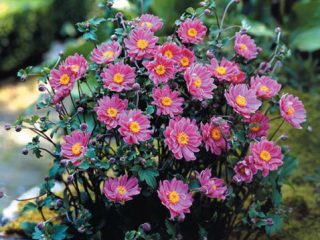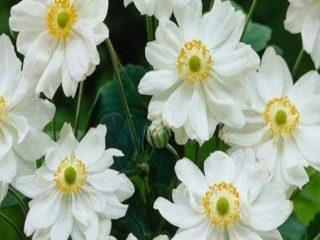Content
Anemones are a combination of tenderness, beauty and grace. These flowers grow equally well both in the forest and in the garden. But if ordinary anemones grow in the wild, hybrid varieties are most often found in flower beds. And like all hybrids, anemones require special care and a bit of care and attention. From this article you will learn when to plant anemones, how to care for them, what these delicate flowers like and don’t like.
There is an opinion among gardeners that anemone - the second name for anemone - is very picky. Actually this is not true. Growing them is not as difficult as it seems at first glance.
It is perhaps difficult to find more unassuming flowers than anemones. Planting and care in open ground will not cause you any particular difficulties. It is only important to know the peculiarities of growing the variety of flowers that you are going to plant in your flower garden.
Features of anemone
Thanks to the work of breeders, there are currently just over 20 hybrid varieties of anemone. And they all differ not only in appearance and color of flowers, but also in structure, degree of frost resistance, planting and care requirements.Despite such diversity, all hybrid varieties share the following growing conditions:
- Anemones prefer partial shade to bright sun;
- Anemones do not like drafts and piercing winds;
- They are very critical to soil moisture and composition.
The root system of anemone is of two types - tuberous and rhizomatous. Therefore, the rules for caring for them are different.
Rhizomatous perennials are not picky and, if the recommendations for care and cultivation are not followed, they react only with a short flowering period or loss of flower brightness.
But tuberous anemones, when grown in open ground, are very critical to violating any conditions of detention. And most often, failure to follow simple rules leads to the death of the entire plant.
What unites all types of anemones is a weak root system. Both tubers and rhizomes have low resistance to root rot.
Selecting a location and preparing the soil for planting
Depending on the variety, the requirements of anemones for soil composition, humidity and lighting levels are strikingly different. Before planting, it is advisable to familiarize yourself with information about growing and caring for anemones in open ground, focusing on the perennial variety, its preferences and conditions of detention. Be sure to consider the climatic conditions of your region and the frost resistance of the plant.
However, with all their diversity, all anemones grow well if the following universal conditions are met:
- Loose, fertile soil;
- Mandatory drainage;
- Moderate watering;
- Penumbra.
Following these rules for planting and caring for flowers is required for all types of anemones.This is especially important if you do not know what variety of anemone you are going to plant on your site.
Sissy anemones are very critical of the composition of the soil. Before planting, you need to add sand to the soil, which will improve the soil structure. Thanks to the presence of sand, the soil will become loose and will allow air and moisture to pass through well. Excess water will not linger in such soil, which will protect the roots from rotting.
Before planting anemones in open ground, it is necessary to lay drainage at the bottom of the planting hole - a small layer of small pebbles or broken bricks. It will perform the same function as sand - to protect the soil from waterlogging.
Too acidic soil is harmful to anemones. Before growing anemones, add a small portion of dolomite flour or charcoal to the soil.
Features of cultivation
Anemones fit perfectly into any landscape design composition. These tender, herbaceous plants are ideal for growing outdoors.
Anemones, like other perennials, are propagated in three ways:
- Seeds;
- Tubers;
- Dividing the bush.
And each of them has its own rules and secrets. Anemone seeds are rarely planted. Most often, gardeners prefer to propagate flowers by tubers or dividing rhizomes.
Growing anemones from seeds
Many gardeners note that growing anemone from seeds in open ground is a complex and painstaking process. After all, even freshly harvested seeds do not have good germination. If all planting and care rules are followed, the germination percentage barely reaches 25%.
The peculiarity of growing anemones from seeds is that the planting material must be subjected to mandatory stratification before planting. When sowing in autumn, there is no need to keep the seed at low temperatures. But when sowing anemone seeds in the spring, stratification is required.
Vegetative propagation
Due to the ease and simplicity of cultivation, propagation of anemone by rhizomes or tubers is preferable. In this case, the plant does not waste precious time on the formation and growth of the root system.
Division of rhizomes
This event is best held in the spring. As soon as the ground thaws, you can begin dividing the bush of herbaceous plants and planting them in open ground. During this period, the plant has not yet “woke up” and will calmly endure the procedure.
Carefully dig up the bush with a pitchfork, being careful not to damage the delicate roots. Clear the rhizome from the soil.
You need to cut the roots with a clean, sharp knife. When dividing, make sure that there are at least 3-4 renewal buds on each separated root.
Growing anemone from tubers
Growing anemone from tubers is a little more difficult than from rhizomes. But nevertheless, this method is also popular among gardeners.
Anemone tubers are planted in open ground in the spring. But before planting they must be processed. This is due to the special storage conditions of the tubers. As you can see in the photo, they are stored in dried form.
Planting material must be carefully inspected. Tubers affected by fungi, mold or damaged must be removed immediately.Soak the selected material in warm water for several hours or overnight. During this time, the anemone tubers will swell and increase in size. Thanks to soaking, you will significantly speed up the germination process.
Landing rules
The rules for planting anemones in the ground are simple and straightforward. Flower growers recommend immediately identifying them in a permanent place before planting. Flowers of tuberous varieties do not tolerate transplantation well. Rhizomatous ones are unpretentious in this regard and can be safely replanted without fear of harming them.
Anemones tolerate spring replanting better than autumn replanting.
When planting seeds, it should be taken into account that the planting depth should not exceed 3-5 cm. Those sprouts that can still hatch are very weak and will not be able to break through too thick a layer of soil.
When pre-winter sowing of herbaceous plants in open ground, the first shoots will appear only in early spring. If the anemone seeds were sown in spring or summer, then you need to wait for the first shoots to appear no earlier than in a month. Young plants at the initial stage of growth need to be provided with proper care:
- Plantings should not be over-watered so as not to cause the death of the plant from root rot;
- protect fragile shoots from drafts and bright sun.
When planting rhizome and tuberous varieties, you should adhere to the following rules:
- in moist, loose soil at a distance of 35-40 cm, dig planting holes 15-18 cm deep;
- Place a drainage layer on the bottom of the hole - small pebbles, brick fragments;
- pour a small layer of sand, 3-5 cm high;
- Carefully place tubers or roots on it;
- cover with soil and level the area.When planting anemones, it is important to remember that you should not deepen the planting material too deeply. A soil layer of 5-7 cm will be sufficient.
- Lightly moisten the soil.
Now everything depends on the subsequent care of the plantings.
What care do anemones require?
The main requirement that must be strictly observed when caring for anemones is strict control of soil moisture. Excess moisture, as well as deficiency, has a detrimental effect on the condition of the root system.
To avoid problems with waterlogging of the soil, you need to plant anemones on a hill and be sure to take care of drainage when planting.
To prevent herbaceous plants for open ground from experiencing a constant lack of moisture, experienced gardeners advise mulching the plantings. From spring to late autumn, the thickness of the mulch layer should be 5-7 cm. When preparing anemones for winter, it is advisable to increase the mulch layer to 12-15 cm.
Dry fallen leaves of fruit trees, peat or special decorative mulch mixtures can be used as mulch. It will not only perfectly maintain the ideal balance of soil moisture, but also prevent active growth weed.
In central Russia, you can additionally cover the flower garden with spruce branches. In regions with a harsh climate, you will have to take more careful care of the safety of anemones. Rhizomes or tubers are dug up, dried and stored in a dark, cool room with an air temperature of no more than +3˚С +5˚С until spring.
It is recommended to fertilize anemones with mineral fertilizers in the fall, and in the budding phase and during the flowering period you can add organic matter in liquid form. The only thing to avoid at this point of care is the use of fresh manure. If during the planting process you have already taken care of fertilizers and applied fertilizing to the soil, then you can postpone this event to the next season.
If you follow these rules of care, it will not be difficult to grow and create ideal conditions for anemones of any variety.
The author of the video will tell you what rules you need to follow when planting anemones in open ground:
Growing anemones at home
Anemones are picturesque, brightly flowering herbaceous plants for open ground. But besides flower beds, they can decorate window sills, balconies and glazed loggias.
It is best to select low-growing varieties for growing at home. As a rule, they are less picky about care. The St Bridget Mix variety is perfect for this purpose, combining beauty, a riot of colors, unpretentiousness and long flowering. Anemones of this variety begin to bloom at the beginning of summer, flowering ends only with the arrival of autumn. The height of plants of this variety is 40-50 cm, which is perfect for growing in pots, containers and small containers.
There is no particular hassle when growing anemones at home. The heat-loving plant takes root easily, grows well and blooms profusely for a long time.
It is best to germinate anemones from seeds at home in special containers for growing seedlings. Seeds germinate 3-4 weeks after sowing.As soon as the young seedlings grow up, they need to be transplanted into containers or pots, taking into account the fact that they grow quite well. For example, no more than 5-6 young plants can be transplanted into a pot with a diameter of 20-25 cm.
When growing anemone at home, do not forget about its preferences:
- when transplanting into flower pots, be sure to add a drainage layer;
- the soil should be loose and neutral acidity;
- sufficient lighting, but direct sunlight on the plantings should be avoided;
- moderate watering.
Over the course of a season, more than 150 flowers will bloom in this small pot - the anemone blooms so luxuriantly and violently.
You can grow anemones from corms at home. The variety “Decaen” has gained particular popularity among flower growers. It is perfect for growing anemones in pots at home and in a flower garden. Plants of this variety are distinguished by their durability and endurance, and, in addition, they are unusually beautiful during the flowering period. Tubers germinate 2-2.5 weeks after planting.
There is no need to water anemones too often after planting. Many gardeners even advise keeping them in the ground for 1-2 weeks without watering. But still, you shouldn’t risk it; water the plants at least once a week. During the period of active growth of green mass and during the flowering period, anemones should be watered more often - at least 2-3 times a week.
Caring for anemones growing at home is not burdensome. All that is required of you is to maintain the microclimate.It is not recommended to spray flowers - signs of fungal diseases immediately appear on the leaves and flowers. Anemones bloom at air temperatures from +15˚С. The room in which flowers grow must be dry. Musty air is very harmful for these sissies - ventilate the room where they grow more often.
For lush flowering, flower growers recommend plucking the flower heads immediately after wilting so that the plant can devote all its energy to forming new buds. This applies to both growing anemones at home and in the open ground.
At the end of August - beginning of September, when the flowering period comes to an end and the first signs of wilting appear, the corms are dug out of the pots, dried and planted in the ground in the garden.
As you can see, caring for anemones is not that difficult. All you have to do is follow the gardeners’ recommendations. And you will receive gratitude in the form of bright, beautiful flowers.
Conclusion
A blooming anemone sometimes resembles a young, modest beauty. The flower heads are slightly tilted, and the enchanting beauty and palette of shades pleases the eye. And, despite the myths about the difficulty of growing it, it is increasingly winning the hearts of flower growers.
